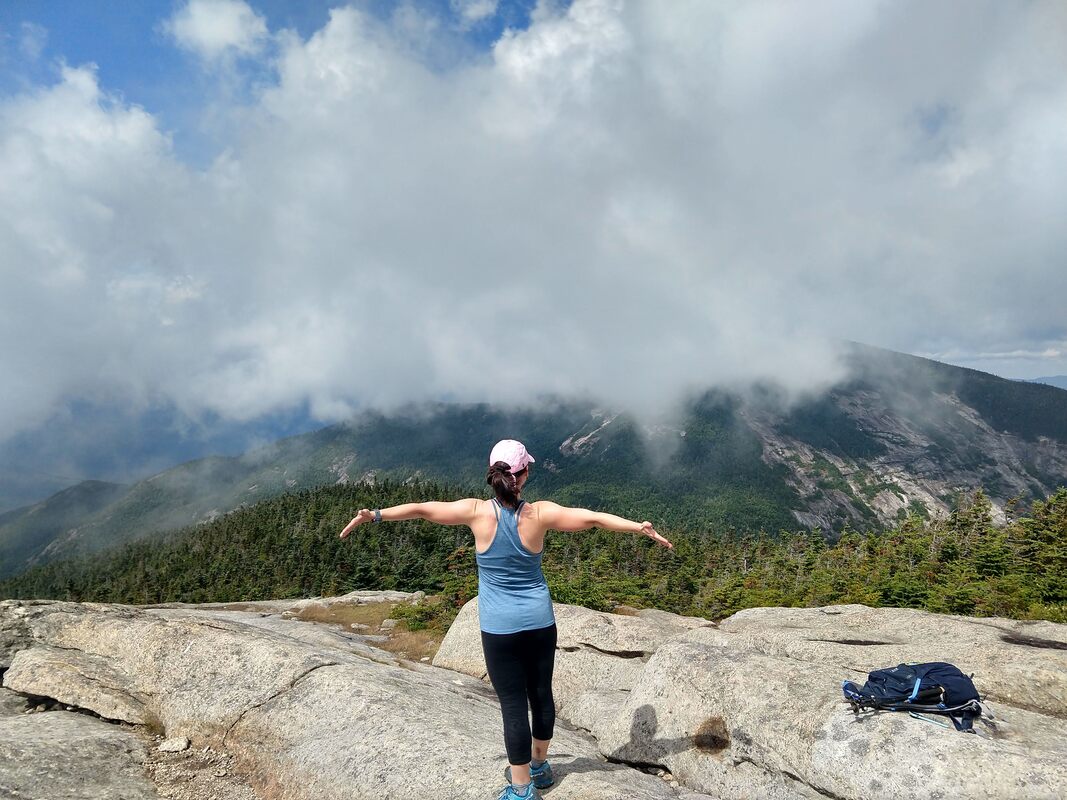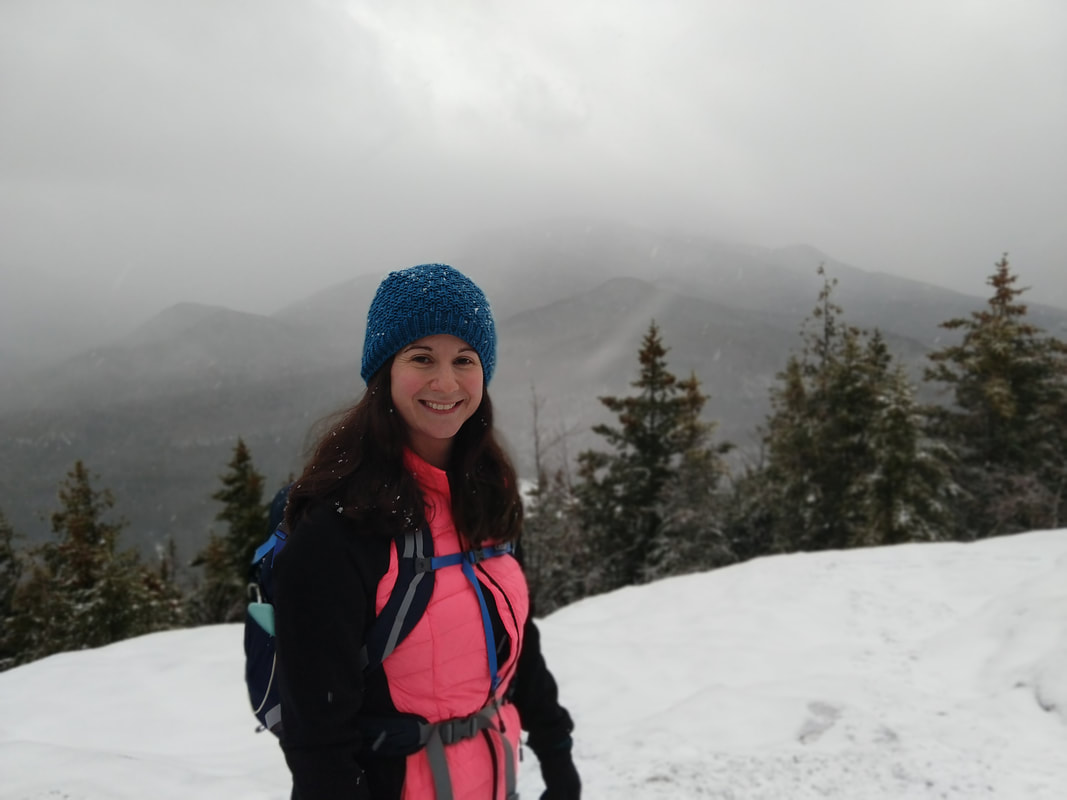|
(Does this qualify as proof of life?)
On many days, I write the same way I prepare for a hike: with structure and the appropriate equipment for the journey. The same items within the same space: Water. The right playlist at the right volume with the phone resting in the lap of the Jedi panda on the shelf. The faux birch tree, lit in its serene LED glory. The diffuser puffing eucalyptus or lavender, alternating between hums and silence (I haven’t ventured to try the other scents). Whatever confidence I can muster. Water. First-aid kit. LifeStraw. Gaiters. Rain jacket. Snacks. Sandwiches. Extra shirt. Extra socks. Hiking poles. Hat. External battery. Map. Headlamp. A mindful entrance into the room. A look toward those objects that give me confidence, that keep me company. The ADK High Peaks trail guide, which has not failed me yet. My book cover, the perpetually-falling protagonist suspended among the clouds on the wall. Trade flip-flops for hiking shoes. Lace them up tight. Clip the hydration pack belt. Lock the car. Feel confident of an adventure and fearful of what’s to come. From this distance, this early in the morning, it can’t be that bad. Spray yourself down with bug spray. Lift the pencil at the trail register. Accept that all of the friendly objects and soft smells and gentle lights in the world cannot, as it turns out, put your fingers to the keyboard. You have to do that. This book scares you. The prospect of not knowing what to write scares you more. It’s like your exercise activities: if you’re going slower than you feel you should be, the self-berating begins. This is why you need structure. This is why you set the timer and then jump in. Name (or group leader). Number of people in party. Destination. Time in. You already know the signing out will be the sweetest part of the day. If it’s early in the season, you’re excited to start moving. If it’s Giant after the Lower Great Range, you’re especially nervous as you duck under the branches and plunge into the forest to begin. Are you really willing to do this again? After last time? This story keeps prodding at you. A plot twist sends you accidentally knocking into a recycling container (maybe it was too far out into the street, okay?). On the good days, you remember why you loved writing as a kid, why it was the only major you were confident you wanted to pursue in college and later into grad school, why it’s the only topic you’ve consistently wanted to teach despite all of those mental what-if forays. The thing is, the body forgets the pain, and soon enough, you’re scrambling up the slides, the valley waking up behind you, the clouds inverting and drifting below you. You jog right up the bare rock, feeling the rush of achievement. You’re getting stronger. You know more now, but you’re equipped for this. Then there are the wrestling days. A Lower Great Range process: You’ve left the flatness of Lake Road and your legs are already burning. How are they hurting this much four miles into the hike? Don’t you run? Don’t you train? How come you’re not in shape for this? What have you been doing wrong? Why do you keep doing it wrong? If you can’t do this, how much worse will the rest of the day be? Where is the wind? Writing this book becomes a solo hike, really. Because writing, like the mountains, forces you to turn inward. Am I brave enough? Am I strong enough? Can I handle the road ahead? And for a while, the answer to the last question was no. Because as you learned from Lower Wolf Jaw, there’s always more elevation to lose. So I took myself off of the trail. Logged out of Twitter for two? Three? years. Didn’t let myself get out of sight of the car, really. Out here, virtually alone, convinced you’re getting closer to the sky and yet every turn in the trail reveals more trees, it’s easy to pause. To hope that this time, you’ll have the strength you need to push through. Dimly, you fear what the descent will be like. But that’s a problem for the later you. Present you still needs to push through. You keep going. You go until you ascend into Algonquin rain or Whiteface winds or Rocky Peak Ridge storm clouds. You go until you find that Iroquois moment – the resounding beauty. Even those moments don’t last forever; a clear view on the summit reveals the miles back. You take what you can. Are you ready? Will you ever be ready? Are you willing? You decide that you are. # I chatted with my good friend Professor Labs about the intersection of writing, hiking, and teaching (with some hints about what I've been working on!). You can listen to it here.
2 Comments
|
Archives
April 2020
Categories |


 RSS Feed
RSS Feed